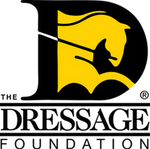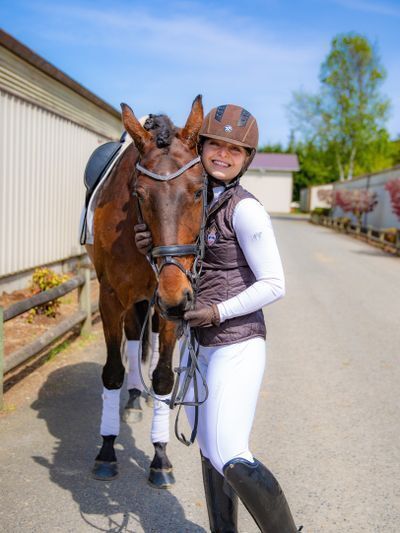
I am so excited to have this once in a lifetime opportunity. It means the world to me. This program will give me the tools to help fulfill my dream of competing at the international level by providing me an abundance of knowledge and tools to build a world class training program. It will also help me set interim goals to ensure my future success.
Emily's Day 1 Journal:
With Adrienne Lyle:
- The overarching theme of the work was calmness. When we first walked into the arena, calm music was quietly playing overhead. When the horse got busy, they always tried to find a way to simplify it - break it down, calm the horse down. They always harness a calming feeling.
- Young horses or otherwise, use walk halt transitions to help riders see where your horses’ tendencies lie. For example, if they always step out to the left, it gives you an idea they’re weak on the left.
- With young horses or horses that struggle with the idea of connection: halt for a few seconds and allow them to become round, giving them an idea of what to do with their body. It slows it down and allows them to process what our expectations are.
- Changes - always keep a horse calm in the change. Usually, problems in the change aren’t actually problems with the changes, they’re a highlight of other problems in the training. Let the horse learn - give them time. It reminded me of the quote from Kyra Kyrklund - “Slow time down."
- Always make sure that the horse knows there's a place where the pressure comes off – a sweet spot where they're not demanded to do work.
- I loved how Adrienne described getting more expression in the canter as “getting more volume." The verbiage really allowed me to picture it.
- “What's happening in the mouth is often a reflection of what's happening in the head” meaning, a horse with a busy mouth may be overwhelmed mentally.
- A horse's steadiness comes from them relaxing into the contact.
- For a horse that doesn’t naturally want to stretch, it's okay to not start them in a long and low frame! You can start them in a frame that's comfortable for them, and that will allow them to stretch over their topline. At the end of the ride, they’ll typically want to stretch a bit more.
- Coming to collected work - stretch the horse's neck down and allow them to come into the work.
- One exercise I liked is walk, pirouette, add both legs, go forward. Then develop it into walk, pirouette, half steps walk, walk pirouette, half steps walk.
- Trot to passage - “Own the in-between,” the time between the passage and trot. You’re not always going to ride around in a passage, but take the elements from the passage and allow them to improve your trot.
- Leg yield your horse in the work, especially young horses ride them off the rail– allow them to feel like they have an out.
With Debbie McDonald:
- I feel like I can sum this up in one phrase: “Intuitive riding”
- Know your horse inside and out. If something seems wrong, investigate it. We’re our horse's advocate. It's absolutely our responsibility to listen to what they tell us.
- Always find more simple ways to ‘explain’ to your horse what you want them to do.
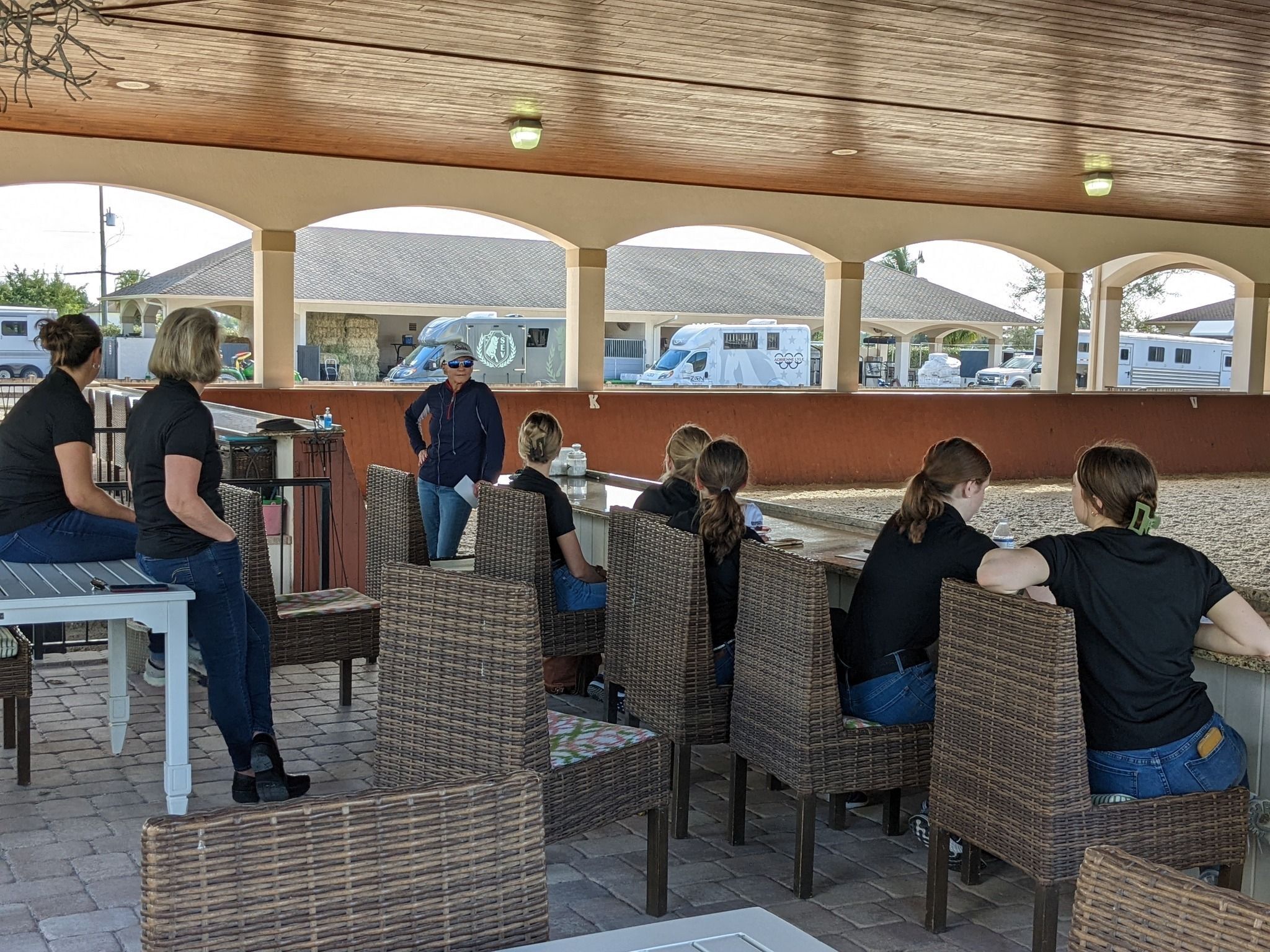
Chatting with Debbie McDonald at TyL Farm
Long-Lining Demonstration with Kathy Connelly:
- Long-lining has many benefits - both physical and nonphysical.
- Allows your horse to develop a feeling for the collected work – the piaffe and passage. They get to learn it on the ground, without the confusion of a rider trying to manage all the aspects that go into it.
- Long-lining grows your relationship with your horse. It allows them to see you as you work together.
- Safety first – as always. Use a helmet and gloves. Always stay away from the hind end – keep your attention on the horse's head. Never have a loop in your long-lines, etc.
- Typically start the long-lining after you’ve already ridden that day.
- The whip should never be used in a harsh way, it should always be a light, simple wisp. Never a whack. Always use the whip as an ask. Take it away. Stop using the whip aid if the horse is already doing what you’ve asked.
- Start simple, just ask the horse to lift their foot. Take the pressure away and reward.
- Use pressure points to relax the horse. Allow them to feel good, drop their head and use their back.
Dinner with Margaret Duprey:
- Make your goals/intentions clear before getting into a syndicate or sponsorship situation.
- Clear communication is key.
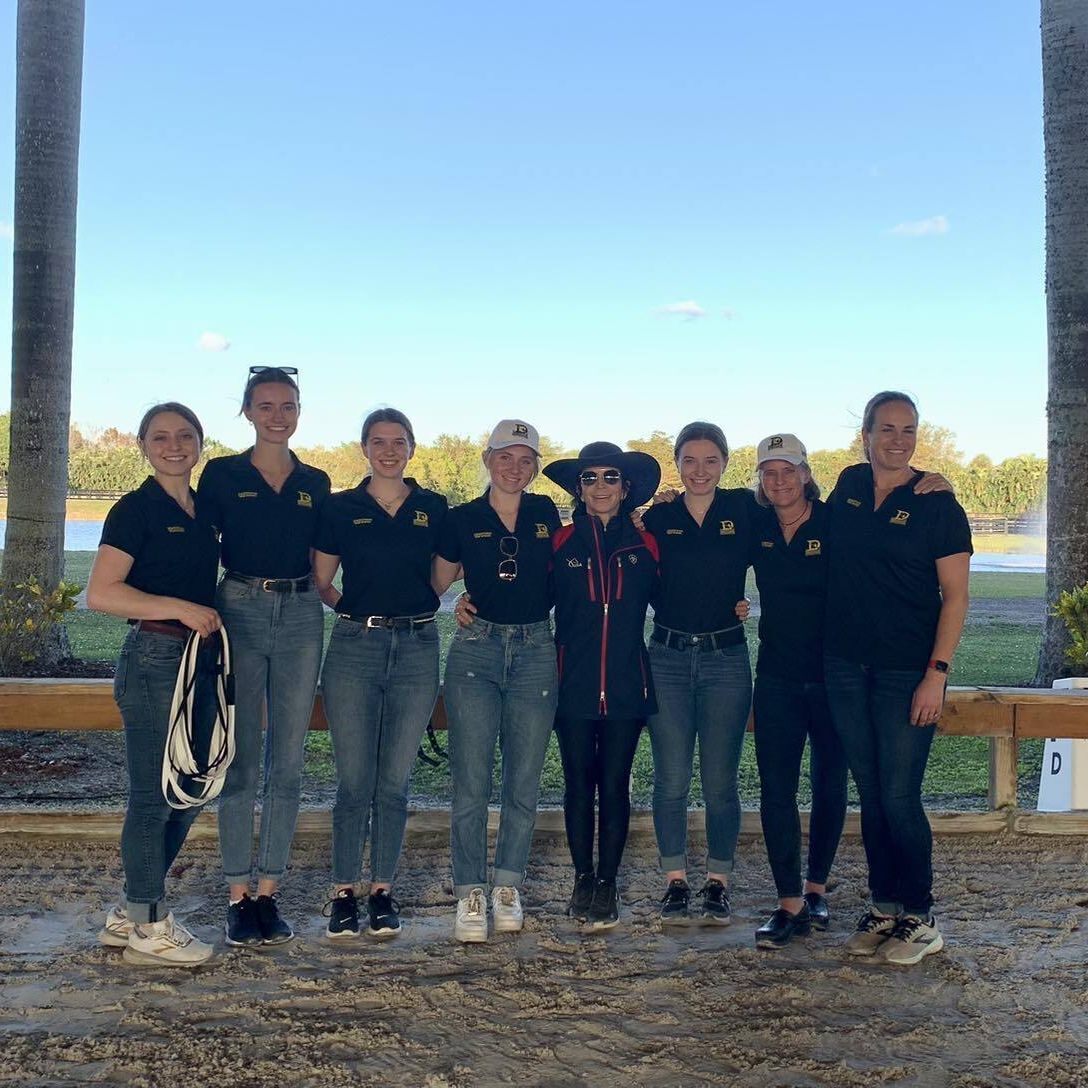
With Kathy Connelly
Emily's Day 2 Journal
Learning from JJ Tate:
The 3 F’s of training: Free. Flowing. Forward.
This means to allow your horse to freely move forward in such a way that it looks as though they’re flowing. Allow your horse to feel free to move forward as a state of mind. Flow is all about balance.
Lots of training is being able to tune your ‘dials’ to make it so you’re able to alter the emphasis of the work. Being able to tune your dials is what allows us to work on the weakest points. For example, the frame. Turning it up into a more Grand Prix frame or down into a more working frame. Especially in the pirouettes, turning the dial down is helpful to engage your horse's topline in such a collected movement.
Horses have three evasions: Inversion, speed, and crookedness.
Pushing the limits often includes “how collected are you” or “how forward can I make you.”
When running into trouble training, a lot of the time it’s simply finding the least common denominator.
The back is naturally the weakest point, but also the point that’s the most sensitive.
A horse’s connection has three arcs: hock to lumbar, lumbar to withers, withers to poll.
Our complete connection is from the hock to the poll, but there can often be an arc where the connection is weaker.
When we’re schooling, we’re developing ‘money to put in the bank,’ such as:
- We build up a reserve tank to use at the shows.
- We don’t school full extended trot, etc.
- 75% of the work is building up the reserve, 25% is testing what you have in the tank.
Contact:
- The neck apparatus needs to get lower, then the horse will open his throatlatch.
- Round, long, seeking the bit - use cavities and allow them to use their hind end.
- Canter trots – engage the hind end.
- Canter walk incorporates a collection.
Changes:
- Control the three strides before the change.
- Collect, collect forward change.
- “Putting together tempis is like stringing together pearls” - JJ Tate
Piaffe is like bouncing a basketball. A buoyancy, quick on the spot.
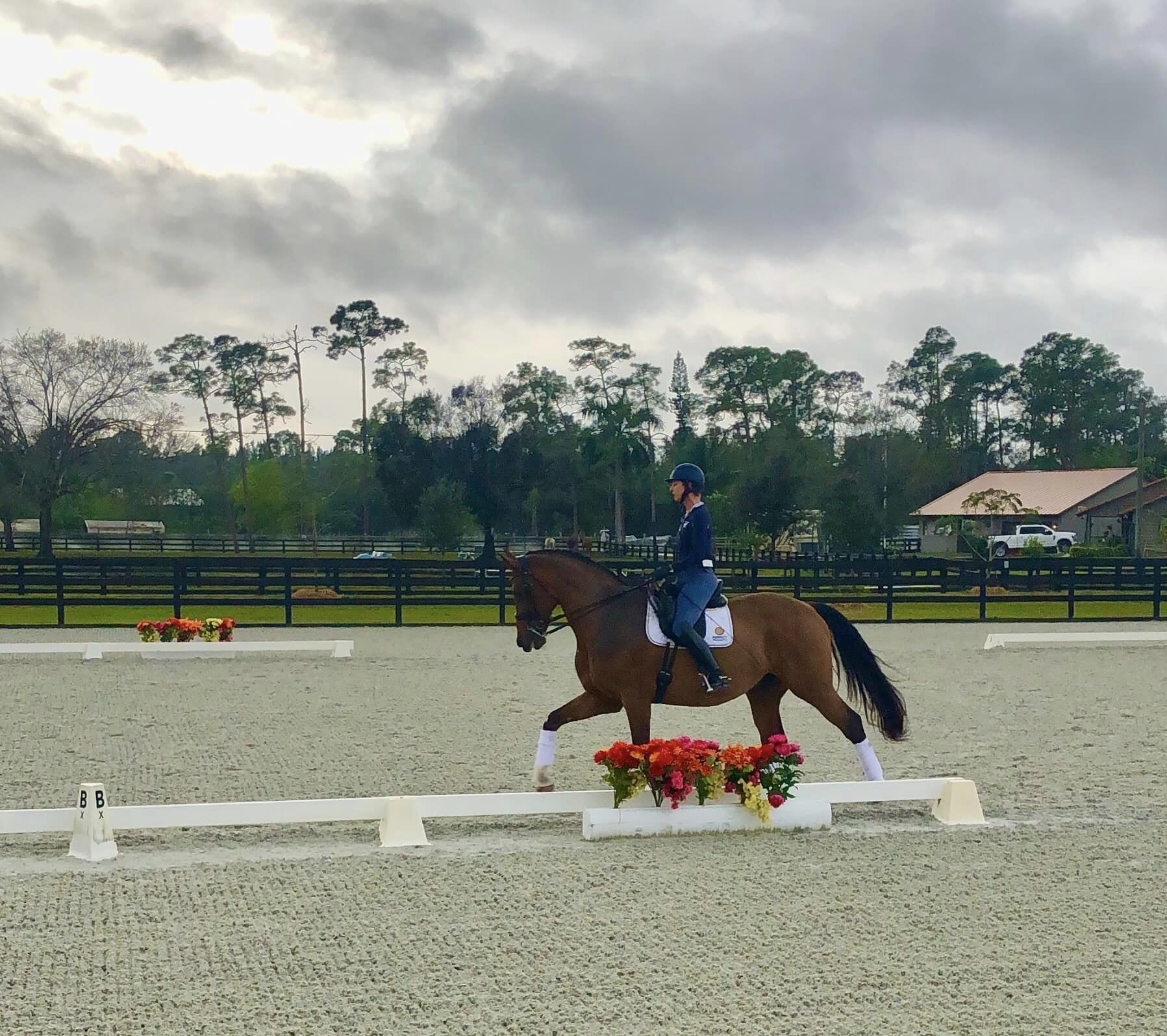
Watching JJ Tate
Dinner with Dr. Hilary Clayton:
Touching the horse's skin activates neurons that result back to the spinal cord and then in turn engages the muscles. This is the same thinking surrounding the Equiband. It helps stabilize the horses back.
Wrapping horses can, in fact, kill the cells of the tendons.
When looking at horses, make sure to really look at the hind legs.
The horse’s feet are designed to constantly have weight shifting on and off of them. They’re meant to be moving constantly. This is why turnout is so good for them.
Always hack horses on different surfaces, it can build bone density.
Emily's Day 3 Journal
Reese Koffler-Stanfield:
- Don’t say no! Take every opportunity available to you.
- As you grow your business, it’s okay to move on from clients. When one door closes another one opens.
- Be creative- this business has a lot of different avenues to grow your business/resume. Take advantage of certification opportunities.
- Be open minded and flexible. You can make it work down in Wellington, you just have to be determined and adaptable.
Ali Brock:
- Prioritize your goals.
- Everyone around you matters, and they are important to incorporate into your decision making, but at the end of the day your goals are important. Don’t let anything devalue them.
Charlotte Bredahl:
- At the U25 level, communication with trainers is imperative.
- There's a certain level of sophisticated riding that must be attained in order to make it on the team.
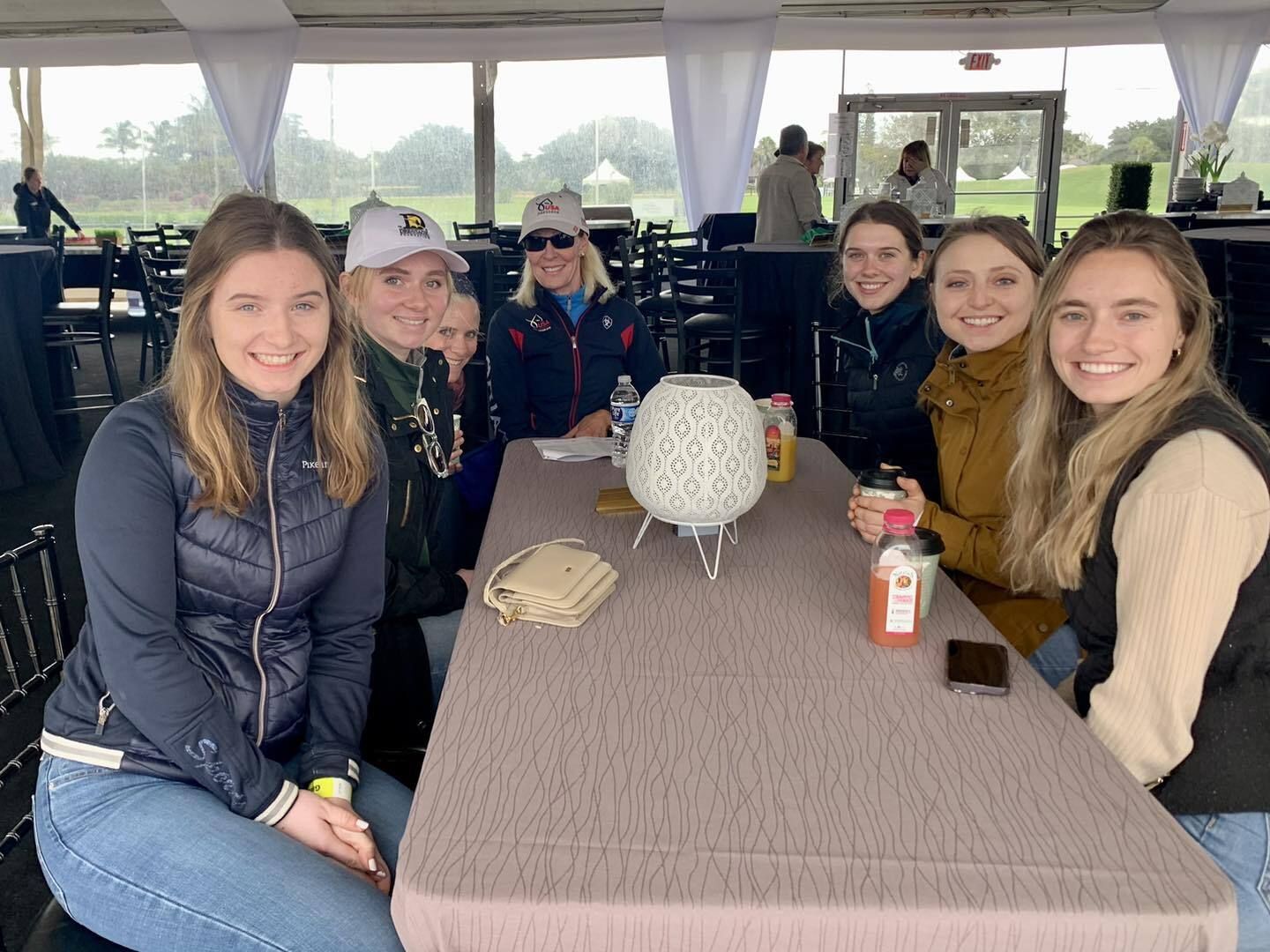
Learning from Charlotte Bredahl at Global
Emily's Day 4 Journal:
Jennifer Williams:
- Adjustability is key throughout the levels.
- Ensure your hands are forward and soft at all times– giving to the horse's mouth.
- Always check to make sure that your horse can go forward without pleading.
- The night before a show, watch a video that inspires you. It helps emulate how you’re going to ride the next day.
- If you pour into one aspect of your life, it does mean that you’re taking away from another, but that doesn’t have to mean that it’s one or the other. Make time for the things that are important to you.
- We can use groundwork to soften the horse- it helps with the warmup and overall impression.
- When walking to the arena, the horse's responsiveness to your aids starts there. Make sure they're walking with you, and that you’re not dragging them along. It ensures teamwork, a sense of reactiveness and sets our expectations.
- Piaffe - think if it as cycling over the topline. Don’t grind so hard “on the spot” while schooling - inch forward 2 inches. It helps with the transition out and ensures you don’t lose the forward movement and activity.
- Let the horse jog and correct them – it's a learning opportunity for them.
- In hand: Walk halts help rock the horse onto their hinds.
"The Bills" - Judges Bill McMullin and Bill Warren
- Take opportunity, and understand it’s normal to feel uncomfortable outside your comfort zone.
- Participate in the L program!! It’s very helpful for all riders, even those that don’t wish to be a judge.
- The FEI levels highlight the biggest holes in horses' basic training.
- Be open to feedback from judges.
- No judge wants to see you fail. They’re rooting for you too. They want to see this sport flourish.

With Judges Bill McMullin and Bill Warren
Emily's Wrap-Up
This trip exposed me to a world that I’d only dreamt about! I was able to learn from the top riders and see the best of the best train in the flesh. One highlight of the trip was getting to sit down and talk to Ali Brock. She motivated me to search for ways that I can go to Wellington as a working student, but mostly I appreciated her perspective on the industry– she was very inspiring. I’ll apply all my newfound knowledge to my day-to-day training routines with exercises and daily carrot stretches. I plan to take this next year to sit down and plan out how I can come down to Wellington and train. Most of all, I'll use the image of Wellington as the picture of inspiration for my goals.
